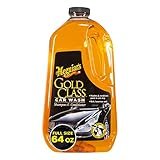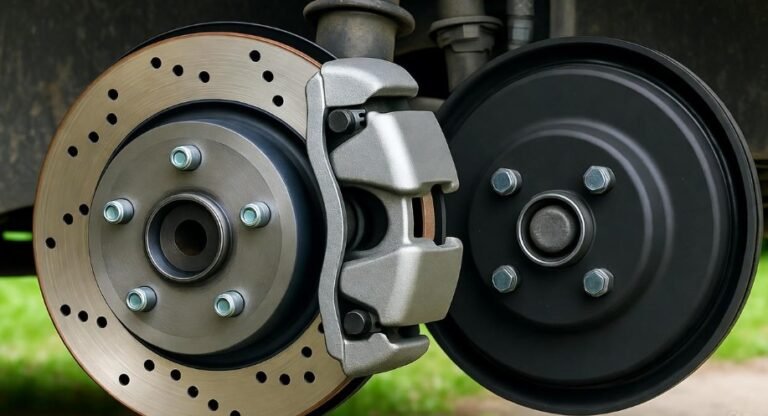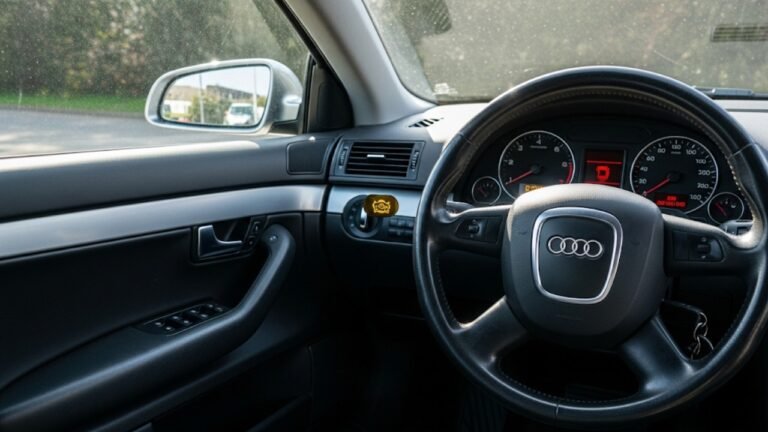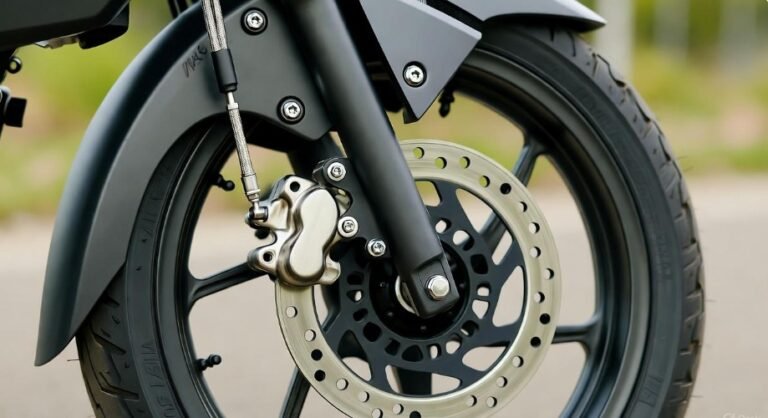Bicycle Disc Brake Pads Price

Bicycle disc brake pads price typically ranges from $15 to $50 per set, with high-performance or specialized options costing more. Factors like material, brand, and compatibility significantly influence the final cost.
Key Takeaways
- Compare prices for different pad materials.
- Check compatibility for your specific brake system.
- Consider reputable brands for reliability.
- Factor in installation costs if needed.
- Look for deals and bundles for savings.
Your bicycle’s stopping power is paramount for safety and control, especially when navigating varied terrain or busy streets. At the heart of this crucial system are your disc brake pads. If you’ve noticed a decrease in braking performance, heard new squeals, or simply want to maintain your bike, understanding the cost of replacing these components is essential. The price of bicycle disc brake pads can seem a bit confusing at first, with a wide spectrum of options available. This guide will break down what influences the cost and help you make an informed decision, ensuring you get the best value for your investment in safety.
Understanding Bicycle Disc Brake Pad Costs
When you start looking into replacing your bicycle disc brake pads, you’ll quickly see that the “bicycle disc brake pads price” can vary significantly. This isn’t just about different brands; it’s about the technology, materials, and intended use packed into these small but mighty components. Think of it like choosing tires for your car – you have options for everyday driving, off-roading, or performance tracks, and each comes with a different price tag.
For a beginner, navigating this landscape can feel overwhelming. Are cheaper pads just as good? What makes one set cost twice as much as another? We’re here to simplify it. We’ll explore the various factors that contribute to the price, helping you understand what you’re paying for and how to find the right balance between cost and performance for your riding style.
What Influences The Bicycle Disc Brake Pads Price?
Several key elements contribute to the final price you see for bicycle disc brake pads. Understanding these will empower you to make a smarter purchase. It’s a blend of material science, brand reputation, and market demand.
Brake Pad Material Types and Their Impact on Price
The material of the brake pad is arguably the biggest driver of its price. Different materials offer distinct performance characteristics, wear rates, and compatibility with various rotor types, all of which factor into their manufacturing cost and retail price.
Organic (Resin) Brake Pads
Organic brake pads, also known as resin pads, are the most common and generally the most affordable option. They are made from a composite material of softer organic compounds (like fibers from plants or plastics) bonded together with resin.
- Pros: Quieter operation, good initial bite (stopping power when you first apply the brakes), easier on rotors, and significantly lower price point.
- Cons: Wear out faster, especially in wet or muddy conditions, and can fade under prolonged heavy braking (like on long descents).
Typical Price Range: $15 – $30 per set.
Metallic (Sintered) Brake Pads
Metallic brake pads are made from tougher materials, typically a mixture of metal particles (like copper, iron, or steel) and graphite, which are then sintered (heated to a high temperature to fuse them).
- Pros: Excellent durability, perform well in wet and muddy conditions, resist fading better than organic pads under sustained braking. They also tend to last longer.
- Cons: Can be noisier, may cause faster rotor wear, and often have a less immediate initial bite compared to organic pads (they build power as they heat up).
Typical Price Range: $25 – $45 per set.
Semi-Metallic Brake Pads
As the name suggests, semi-metallic pads are a hybrid, combining elements of both organic and metallic compounds. They aim to offer a balance between the comfort of organic pads and the durability of metallic pads.
- Pros: Good all-around performance, better heat dissipation than pure organic, quieter than pure metallic, and offer a decent lifespan.
- Cons: Can be a compromise – not as quiet as organic, or as durable/high-performance in extreme conditions as metallic. They are typically more expensive than organic.
Typical Price Range: $20 – $40 per set.
Ceramic Brake Pads
Ceramic brake pads are the premium option. They are composed of ceramic fibers, fillers, and bonding agents. These pads are less common for mainstream cycling but are found on high-end bikes or used for specific applications.
- Pros: Very quiet, produce less dust, excellent heat dissipation, and are very gentle on rotors, leading to longer rotor life. They can also offer consistent performance across a wide temperature range.
- Cons: Significantly more expensive, and their stopping power might not be as immediate as some other compounds in certain conditions.
Typical Price Range: $35 – $60+ per set.
Brand Reputation and Quality
Just like with any product, established brands in the cycling industry often command higher prices due to their reputation for quality, research and development, and customer support. Brands like Shimano, SRAM, Hayes, and Avid are known for producing reliable brake systems and their corresponding replacement parts. While generic or lesser-known brands might offer lower prices, they may not always match the performance, longevity, or consistency of the established players. Investing in a reputable brand often means buying peace of mind.
Compatibility with Your Brake System
Bicycle disc brake systems are not entirely universal. Different brake manufacturers use slightly different caliper designs and pad shapes. For example, Shimano has various pad shapes (e.g., F01A, K04Ti), as do SRAM and others. Using the wrong pad shape won’t work, and even within a brand, different pad models are designed for specific brake calipers. This specificity means that manufacturers produce a wider range of specialized parts, which can influence pricing. Always ensure the pads you buy are explicitly listed as compatible with your specific brake model. You can often find this information on the packaging or the manufacturer’s website – for instance, checking the SRAM compatible brake pad guide can be very helpful.
Rotor Type and Material Considerations
While the pads themselves are the primary cost, the type of rotor your bicycle uses can indirectly influence pad choice and, therefore, price. Some rotors are designed to work best with specific pad compounds. For example, very thin or lightweight rotors might benefit from less aggressive pad compounds to prevent premature wear, potentially leading you to choose a pricier, more rotor-friendly ceramic or premium organic pad. Conversely, robust rotors might handle metallic pads with ease. The interaction between pad and rotor is a system, and sometimes optimizing one impacts the best choice for the other.
Where You Buy: Retailer Markup and Location
The bicycle disc brake pads price can also differ depending on where you purchase them.
- Local Bike Shops (LBS): Often offer expert advice and installation services, but their prices might be a bit higher due to overhead costs.
- Online Retailers: Can offer competitive pricing and a wider selection, often with significant discounts. However, you miss out on immediate expert advice and may have to pay for shipping.
- Direct-to-Consumer Brands: Some newer companies sell directly online, potentially cutting out middlemen and offering lower prices for comparable quality.
Prices can also vary regionally within the USA due to shipping costs, local taxes, and market competition.
Bicycle Disc Brake Pads Price Comparison Table
To give you a clearer picture, here’s a general comparison of bicycle disc brake pads price ranges based on material. Remember that these are approximate figures and can vary by brand and retailer.
| Pad Material | Typical Price Per Set (USD) | Key Characteristics | Best For |
|---|---|---|---|
| Organic (Resin) | $15 – $30 | Quiet, good initial bite, rotor-friendly, affordable | Casual riding, dry conditions, budget-conscious riders |
| Semi-Metallic | $20 – $40 | Balanced performance, better than organic in wet, good durability | All-around riding, varied conditions, riders seeking a compromise |
| Metallic (Sintered) | $25 – $45 | Excellent durability, performs well in wet/mud, longer lasting | Aggressive riding, wet/muddy conditions, long descents, touring |
| Ceramic | $35 – $60+ | Very quiet, low dust, rotor-friendly, consistent performance | High-performance bikes, riders prioritizing quietness and rotor life, specific applications |
Average Cost of Bicycle Disc Brake Pads
When we talk about the average cost, it’s helpful to consider what most riders will encounter for standard replacements. For a typical commuter or recreational cyclist, replacing organic or semi-metallic pads, the bicycle disc brake pads price will likely fall between $20 and $35 per set (for two wheels). If you ride more aggressively, frequently encounter wet conditions, or are looking for greater longevity, you might lean towards metallic pads, pushing the average slightly higher, perhaps to $30 to $45 per set. High-performance ceramic pads will always be at the upper end, and sometimes beyond, this average.
It’s important to note that “per set” usually means enough pads for one brake caliper. Since a bicycle has two brakes (front and rear), you’ll typically need to buy two sets of pads to replace them all. Always check the product description to confirm if a set is for one brake or a pair.
Factors That Can Increase The Price Beyond Basic Pads
While the material is the primary cost driver, other factors can push the bicycle disc brake pads price higher:
- High-Performance Compounds: Some brands offer “performance” or “extreme” versions of their organic, metallic, or semi-metallic pads. These often use proprietary compounds designed for better heat management, increased stopping power, or longer life, and come with a premium.
- Brand-Specific Designs: As mentioned, Shimano, SRAM, and others have their own unique pad shapes and designs that are often only compatible with their specific brake systems. While this isn’t always more expensive, specialized or proprietary parts can sometimes carry a higher cost.
- Bundles and Kits: Some retailers might offer brake pad replacement kits that include additional items like new hardware (pins, springs) or even small bottles of brake fluid. These bundles can offer good value but will naturally have a higher price tag than just the pads alone.
- R&D and Patented Technology: Brands that invest heavily in research and development to create unique, high-performing pad compounds might price them accordingly to recoup their investment and reflect the advanced technology.
Pro Tips: Getting the Most Value for Your Bicycle Disc Brake Pads
To ensure you’re getting the best bang for your buck without sacrificing safety, consider these tips:
- Inspect Regularly: Check your pad wear often. Catching them before they’re completely gone can prevent damage to your rotors, which are much more expensive to replace.
- Buy in Bulk (When Possible): If you know you’ll need pads for multiple bikes or plan to stock up, buying a couple of sets at once might allow you to take advantage of sales or bundle discounts.
- Consider Aftermarket Brands Carefully: While major brands are safe bets, some reputable aftermarket manufacturers offer excellent quality pads at a lower price. Do your research and read reviews.
- Learn to Install Yourself: If you’re comfortable with basic bike maintenance, learning to replace your own brake pads can save you significant labor costs from a bike shop. Many online tutorials, like those from Park Tool, offer excellent step-by-step guides.
When to Replace Your Bicycle Disc Brake Pads
Knowing when to replace your pads is crucial for safety and performance. Don’t wait until your brakes stop working! Here are the key indicators:
Visual Inspection for Wear
This is the most straightforward method. Brake pads have a minimum thickness before they need replacement.
- Organic/Resin Pads: Look for a pad material thickness of about 1mm or less. When it’s worn down to the metal backing plate or close to it, it’s time for a change.
- Metallic/Ceramic Pads: These are often thicker and more durable. A general rule is to replace them when the friction material is worn down to about 1.5mm to 2mm, or when you can see the metal backing plate.
Many brake pad manufacturers include wear indicator lines on their pads. If you can’t see these lines anymore, it’s a clear sign they are worn out.
Performance Degradation
Pay attention to how your brakes feel and sound:
- Reduced Stopping Power: If you need to pull the brake lever harder than before to achieve the same stopping effect, your pads are likely worn.
- Squealing or Grinding Noises: New pads can sometimes be a bit noisy as they bed in, but persistent, loud squealing or a harsh grinding sound often indicates worn-out pads or something more serious, like contaminated pads or a damaged rotor. A metallic screeching sound can sometimes mean the pad material has worn down to the metal backing.
- Spongy Lever Feel: While a spongy lever can indicate air in the brake lines (requiring a bleed), it can also sometimes be related to severely worn pads that are overheating or not making proper contact.
Contamination
Brake pads can become contaminated with oil, grease, or other lubricants. This contamination significantly reduces their effectiveness. If you suspect contamination:
- Visual Check: Contaminated pads often look glazed or have a shiny, discolored surface.
- Feel: They might feel slippery or offer very little friction, even when new.
If contaminated, it’s usually best to replace the pads. Sometimes, light contamination on organic pads can be cleaned, but metallic and ceramic pads are harder to salvage. For more information on brake maintenance, resources like the Cycling Weekly maintenance guide can be helpful.
Bicycle Disc Brake Pads Price vs. Cost of Neglect
It can be tempting to postpone replacing brake pads to save money. However, the “bicycle disc brake pads price” is a relatively small investment compared to the potential costs of neglect.
- Rotor Damage: Riding with worn-out pads that have exposed metal backing can quickly scratch and damage your brake rotors. Rotors are significantly more expensive than pads, and severe damage might require their replacement as well.
- Reduced Safety: Compromised braking performance directly impacts your safety and the safety of others. In emergency situations, effective brakes can be the difference between a minor incident and a serious accident.
- Shorter Lifespan of Other Components: If your brakes aren’t working effectively, you might find yourself relying more on other brake components, potentially leading to premature wear.
Consider that a set of basic organic pads might cost as little as $15-$20. A new brake rotor can cost anywhere from $25 to $100 or more, depending on its size, material, and brand. The savings from replacing pads proactively are substantial.
Frequently Asked Questions (FAQ)
Q1: How much do bicycle disc brake pads usually cost?
A1: Bicycle disc brake pads typically range from $15 to $50 per set. Organic pads are at the lower end, while metallic and ceramic pads are more expensive.
Q2: Are expensive brake pads worth the money?
A2: Often, yes. Higher-priced pads usually offer better performance, durability, and consistency, especially in demanding conditions. However, ensure the expensive pads are compatible with your riding style and brake system.
Q3: Can I use any brand of disc brake pads on my bike?
A3: No. You must use pads that are compatible with your specific brake caliper model and shape. Always check the manufacturer’s specifications.
Q4: How often should I replace my bicycle disc brake pads?
A4: This depends on riding conditions and frequency. Check them regularly. Replace organic pads when the material is around 1mm thick, and metallic/ceramic when around 1.5-2mm thick, or when you notice reduced stopping power or noises.
Q5: What’s the difference between organic and metallic brake pads?
A5: Organic (resin) pads are softer, quieter, and cheaper but wear faster. Metallic (sintered) pads are harder, more durable, perform better in wet conditions, but can be noisier and wear rotors faster.
Q6: Do I need to replace both front and rear brake pads at the same time?
A6: It’s good practice to replace pads on the same axle together for balanced braking. If one set is significantly more worn than the other, you might need to replace it sooner. Ideally, inspect both and replace as needed.
Q7: What are glazed brake pads?
A7: Glazed pads are overheated and hardened, losing their friction material’s effectiveness. They often have a shiny surface and reduced stopping power. It’s usually best to replace glazed pads and clean the rotors.
Conclusion
Understanding the “bicycle disc brake pads price” is key to maintaining your bike’s safety and performance without breaking the bank. While basic organic pads can be found for as little as $15 a set, you can expect to spend $25-$45 for more durable metallic or semi-metallic options, and upwards of $40-$60 for premium ceramic compounds. Remember that material, brand, and compatibility are the primary factors influencing cost. By regularly inspecting your pads, choosing the right material for your riding style, and ensuring compatibility with your brake system, you can make an informed purchase. Proactive replacement not only ensures reliable stopping power but also protects more expensive components like your rotors, ultimately saving you money and keeping you safe on every ride.






